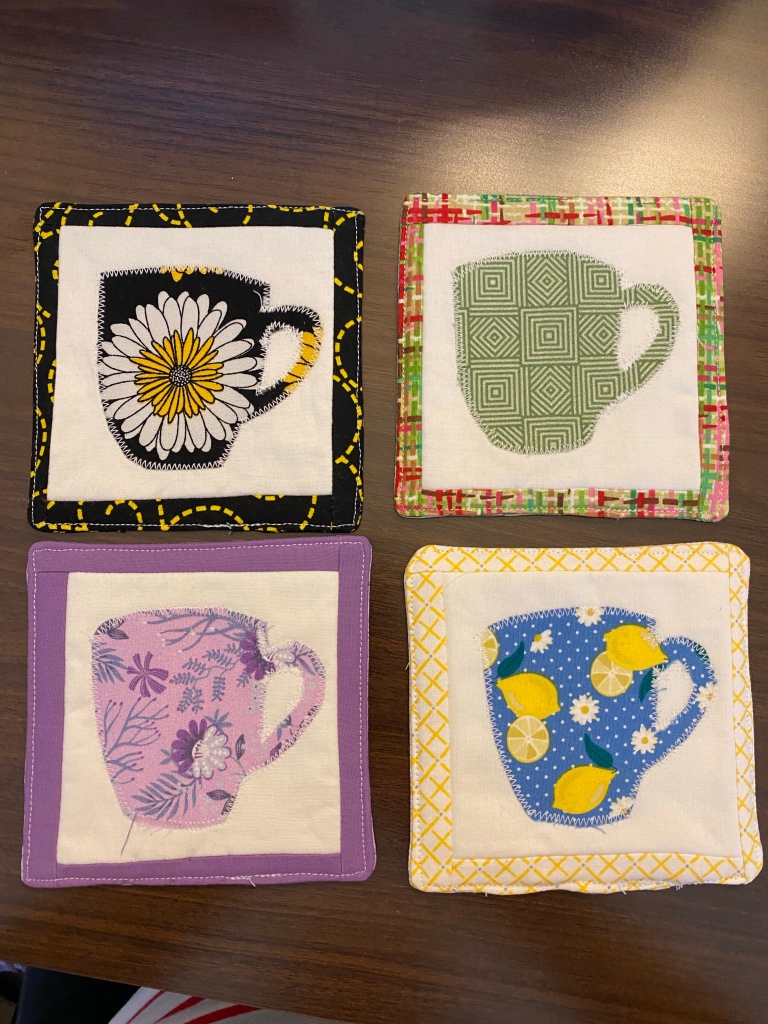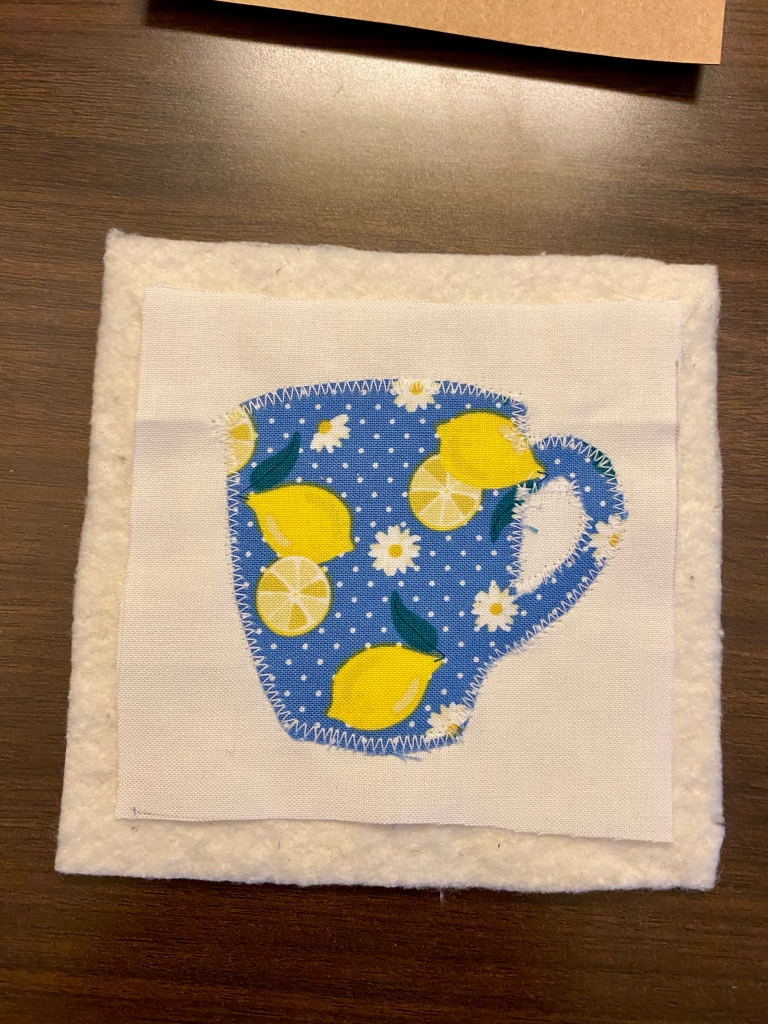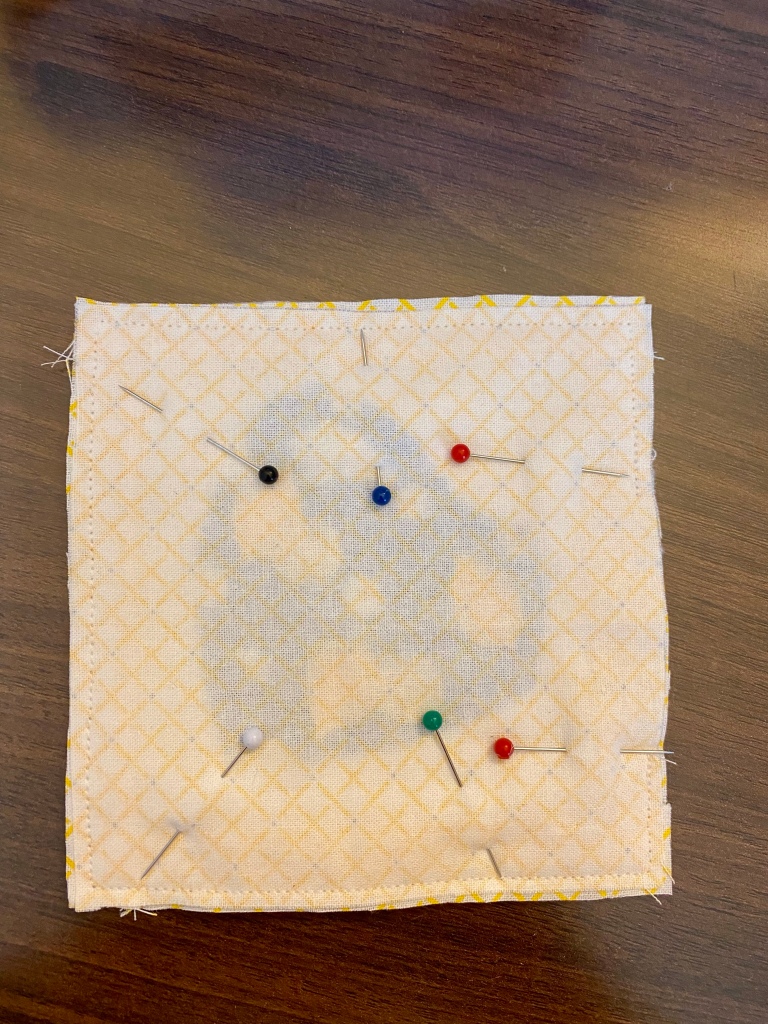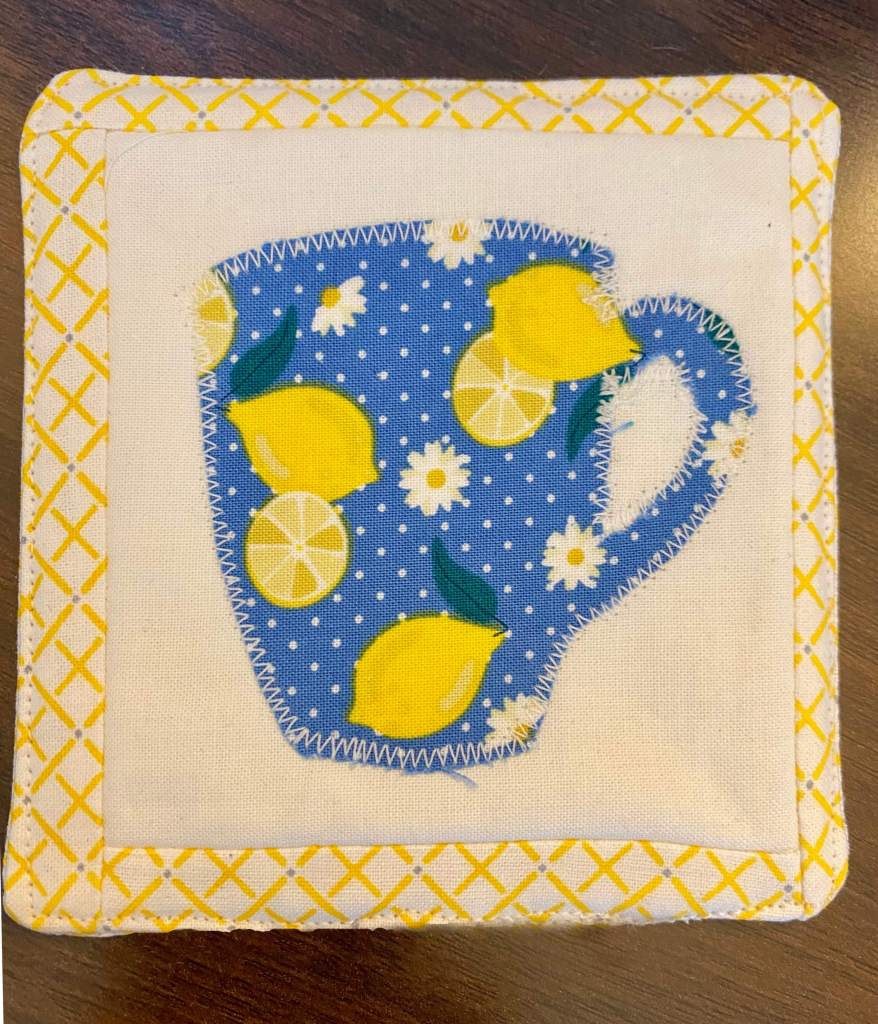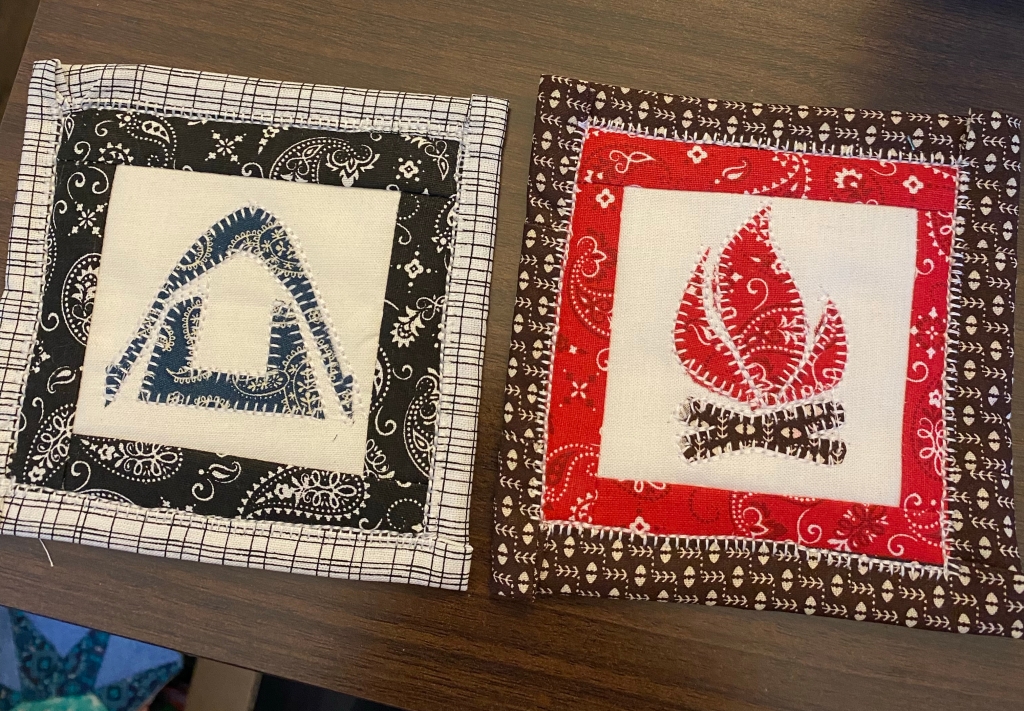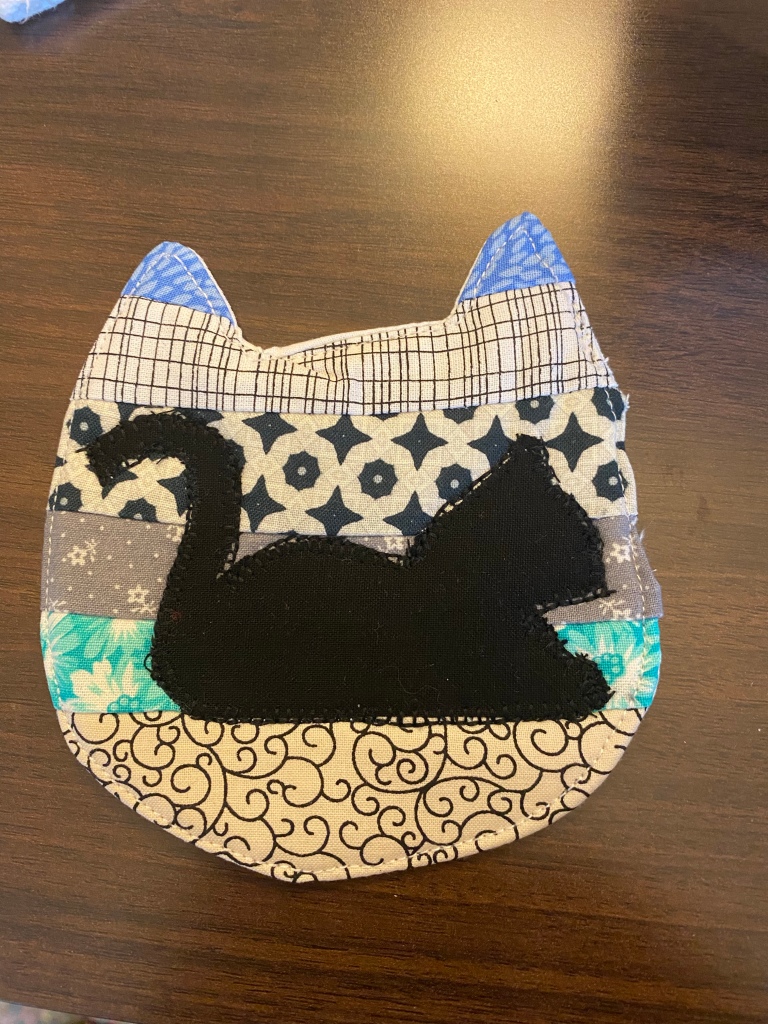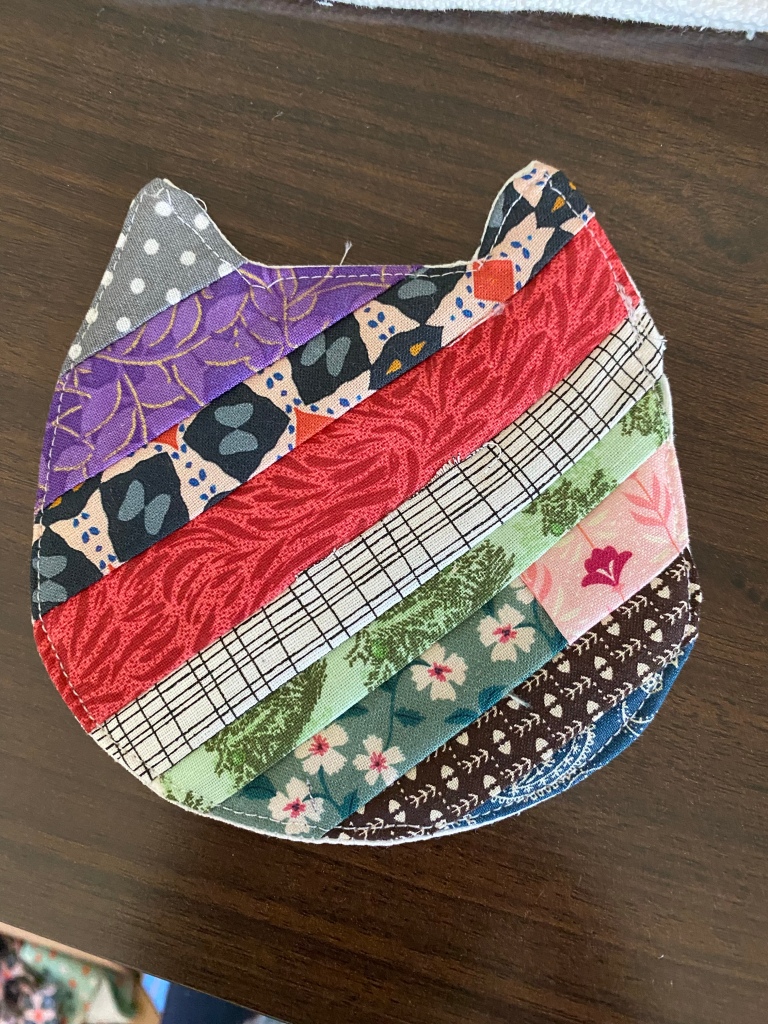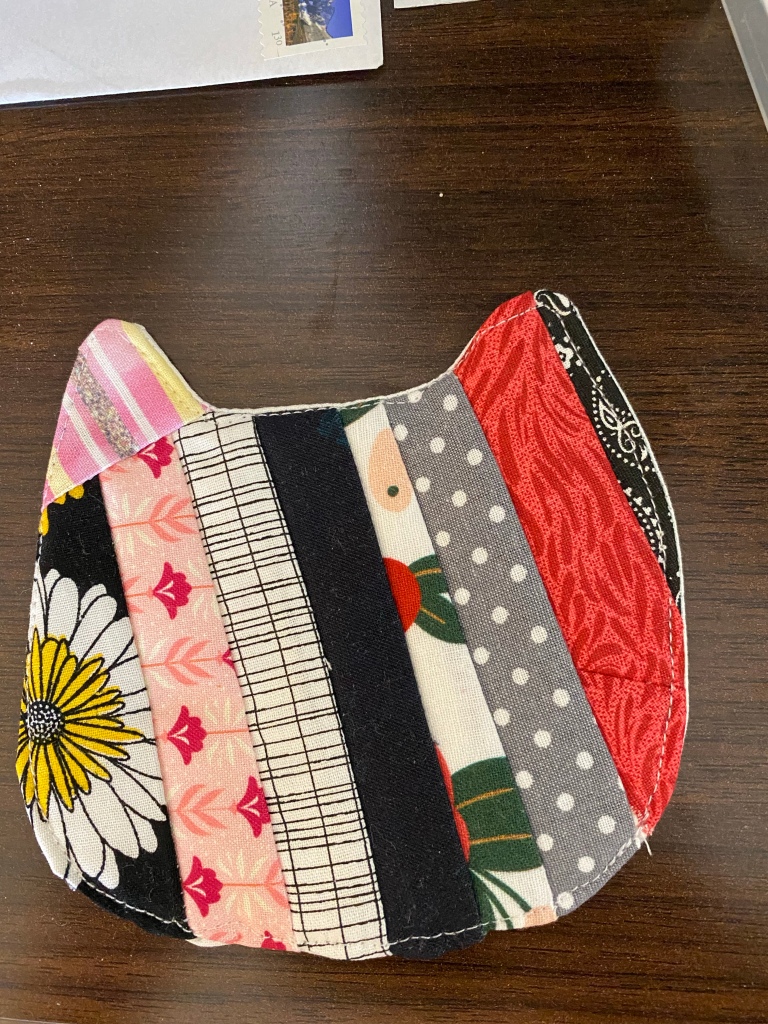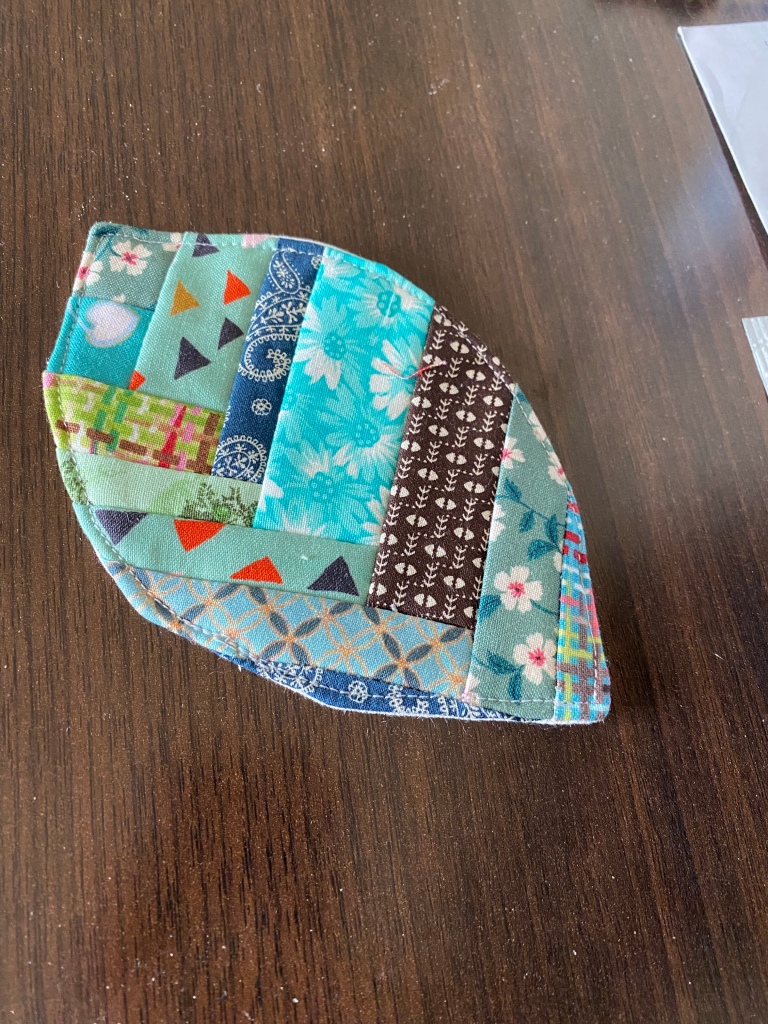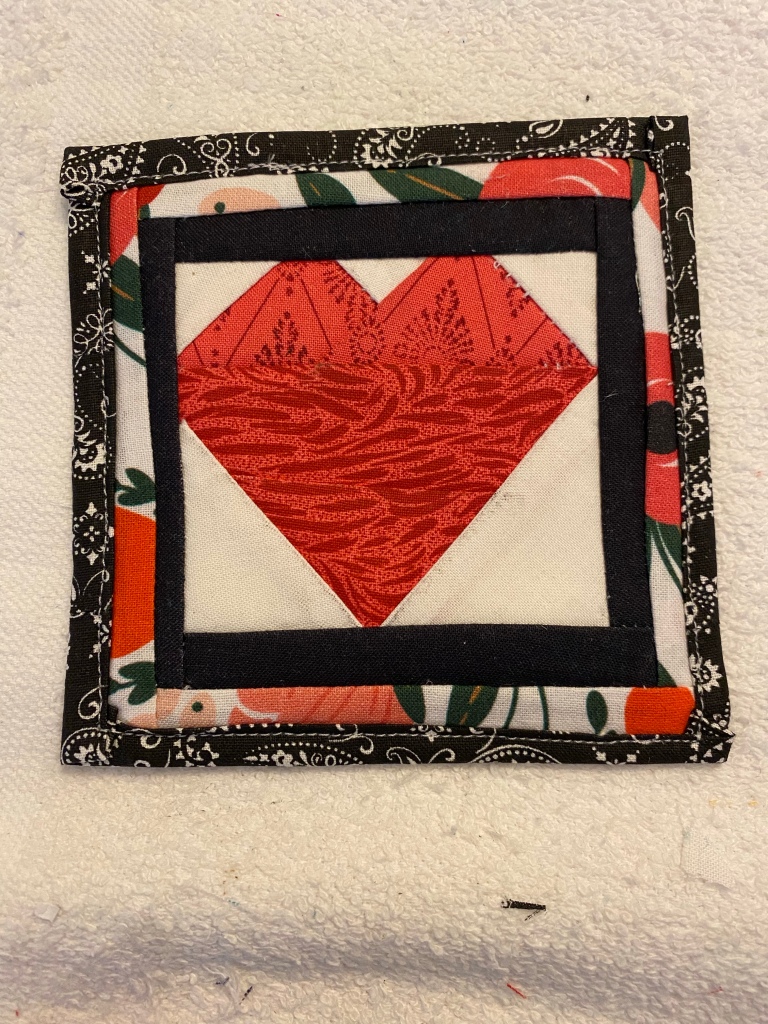I think everyone who makes a coaster has her/his own way of doing it. I have decided on this method because for me it’s a bit faster and a little more fun in the fabric choice.
I made a set of 4 coasters for my sister, different fabrics, but all with the same applique. Here it is broken down into steps.
- Cut a central fabric 4×4 inches. I used white.
- Cut cotton batting and a backing fabric 4 3/4 x 4 3/4 inches. My backings match either the border or the applique.
- Trace your applique design onto Heat N Bond or other double-sided adhesive. If it matters, trace the design as if backwards to how the fabric should look. Cut out, including waste pieces within the design.
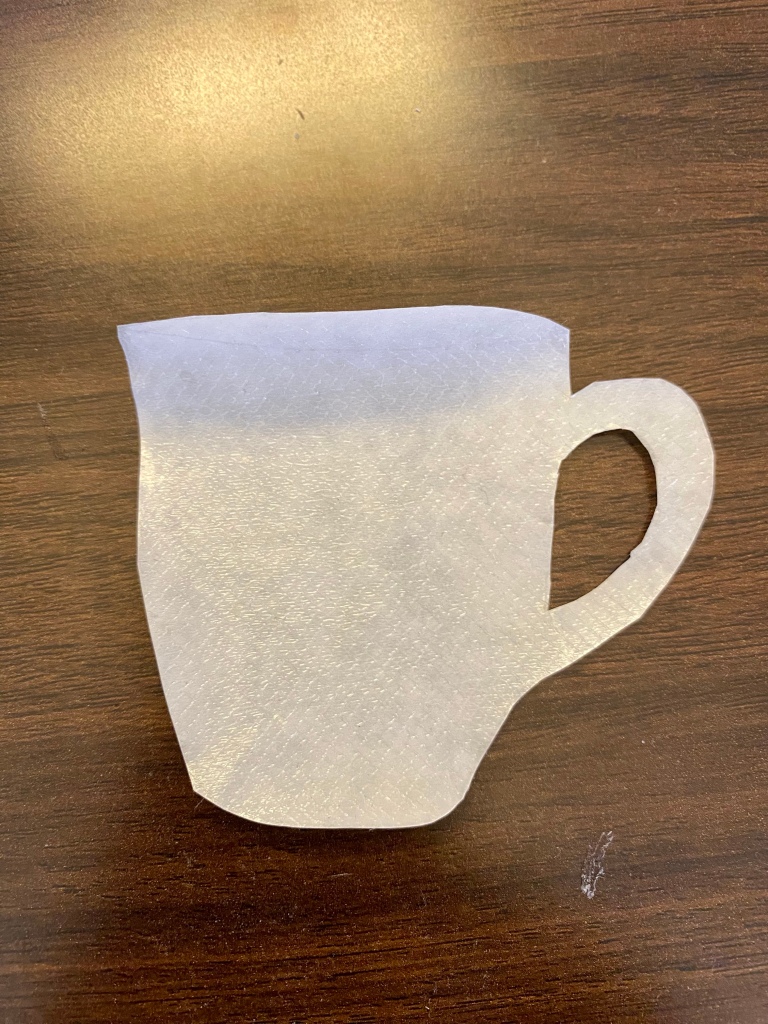
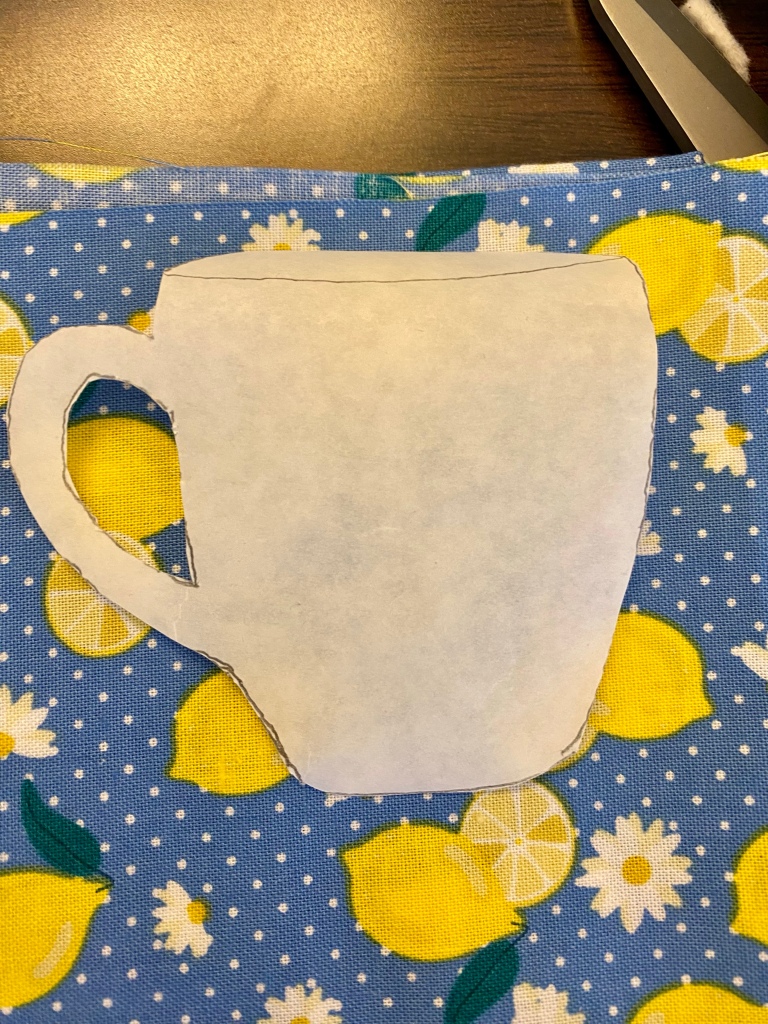
- Press it to the back side of the fabric and cut out as above. Use a pin to score the paper on the back of the applique, revealing the other adhesive. Place it on the central fabric and press into place.
- Using a narrow zigzag, or other decorative stitch, stitch all around your applique. Edges may shred without this step. I’ve used a blanket stitch and a hem stitch on other coasters.
- Center the design on the batting, leaving the backing off and pin in place. I had cut 1 inch strips of a coordinating fabric for a border. (I used the method I learned for making a precise hem in a skirt, 50 years ago.) Pin at the edge of the white fabric, stitch, turn, press, and flip it over. You’ll see some overlap to trim even with the batting.
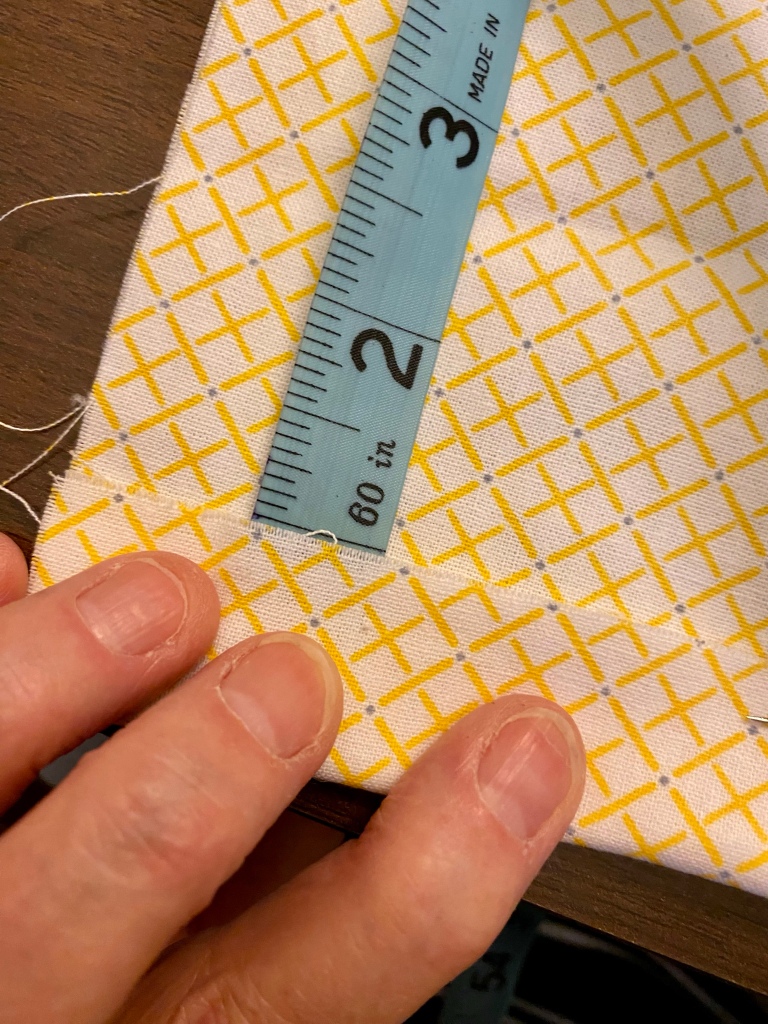
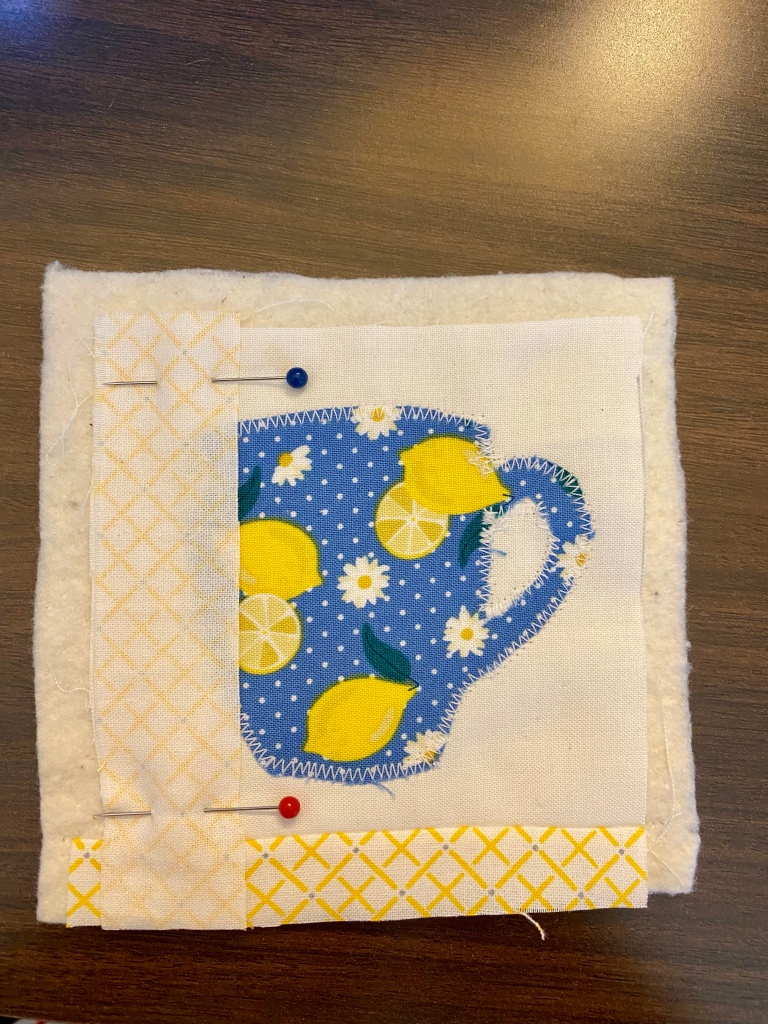
- When you have done 4 edges the same way, lay the coaster with the design facing up, and layer the backing with right side facing down. Stitch along the edges and leave open about 2 inches for turning. I give myself a visual cue of a red pin where the edges of the turning gap is.
- Turn right side out, pushing out the corners and straightening the edges. You may want to trim across the corners first, which I had neglected to do to have them sharp instead of rounded. Turn the raw edges to the inside and press, pin (or both) in place. Topstitch close to all edges. Give it a final press.

